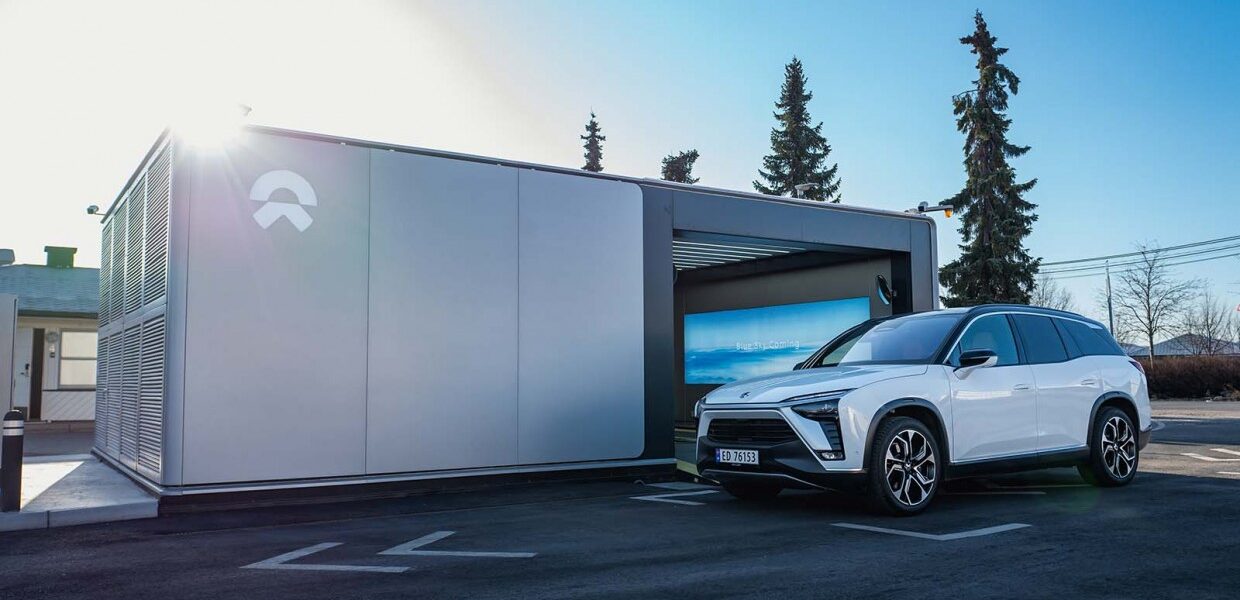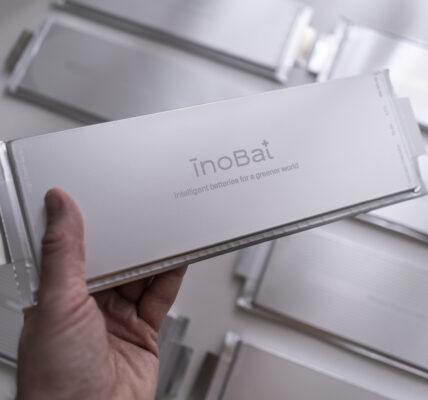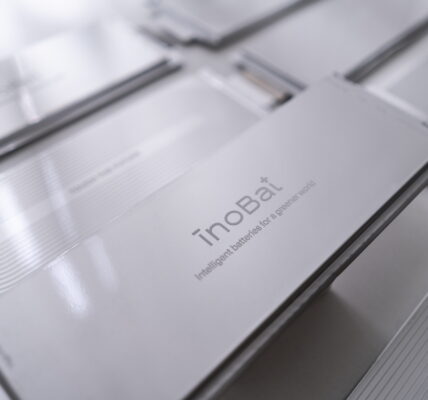Chinese electric car giant Nio recently announced plans to expand its operations and bring its fleet of electric models to Europe, including the UK.
Nio co-founder Lihong Qin confirmed that after rolling out its ET5, ET7 and EL8 electric cars in Germany, the Netherlands, Denmark and Sweden, the brand will launch in the UK towards the end of next year.
Nio’s first European expansion came in 2021 when the firm launched its ES8 electric SUV in Norway.
There are plenty of Chinese EV firms coming to Europe at the moment, but Nio stands out for its novel approach to providing fresh power to its cars. Because instead of waiting for your battery to charge up, Nio wants you to swap it for another one.
That’s already offered in China through the firm’s Nio Power service: owners simply drive to a battery swap station, park their vehicle inside and a robot swaps the depleted unit for a new one in around five minutes.
Of course you can still charge the Nio with a public charging device or home charger, But what the swap station allows for is faster charging which is more comparable to refuelling an ICE-powered car.
The Chinese car manufacturer has more than 1000 battery swap stations in China, and Nio has already opened two stations in Norway.
The battery swap station can house up to 13 batteries at a time, which also has an outside DC charger for owners to use while they wait for a swap. Each swap station is around the size of six car parking spaces, which the company says makes them easier to install in varied locations.
Battery swapping is relatively common with smaller electric vehicles such as e-bikes and electric motorbikes, but many doubt it’s feasible to really work with larger car batteries.
So a sit down with Nio Power boss, Fei Shen, was done to understand why Nio opted for battery swap technology and to learn more about the challenges the company is trying to overcome as it expands across Europe.
Why did you choose to go down the battery swapping route?
“Originally we considered the battery swapping method because it was the only means for the user that is comparable with gas refueling.
“At the very beginning, this was the only means of charging that had the best value for our customers and even in the hardest times we insisted on this kind of technology.
“We also wanted to separate the battery from the vehicle so that users could pay for the battery on a monthly basis. If you calculate the overall cost of a traditional ICE-powered car, in its whole lifetime of around 12 to 15 years the user will spend a lot of money on fuel.
“The total money spent on fuel is almost equivalent to the cost of an EV battery and the electricity. By offering the battery as a service we can lower the initial costs of the car itself.
“If you buy the car and battery together, after several years the battery pack will be out of date and we think this experience isn’t good enough for our users.
“By having swappable batteries, users that live in the city who are going on a long journey and need a different battery can upgrade to a bigger unit either on a permanent or flexible basis. This is cheaper and a better experience overall.
“And finally, by having the battery swap stations we can have higher efficiency overall because we can have a car inside the station itself with another car being charged using a device on the outside. The two systems can share the power from the utility company which means the efficiency of the swap station is almost doubled.
“We know we can charge a vehicle whenever it comes to the swap station by either swapping the battery or plugging it in.”
How did launching in Norway support your new plans to expand across Europe and what did you learn from it?
“Yes, we have learnt a lot about building the swap stations here in Europe. In fact, the one’s here are slightly wider than those that are built in China. Our building processes are also slightly different in Europe.
“Through our work in Norway we have gained a lot of experience and have been able to optimise the efficiency of the swap stations.
Are there any challenges to bringing battery swap stations to new parts of Europe and are there any concerns around the price of energy?
“I think we will face a lot of challenges with the expansion of the battery network in Europe, but they will be similar to the difficulties we had during our early years in China.
“The challenges can be similar like getting the right place or site for the swap station and we have to do a lot of negotiating to persuade landlords to build a swap station.
“Nio is a new brand here and I think it will take some time for our partners to have confidence in us and trust us to build battery swap stations.
“We have local supply chains that build our swap station factories, an we are looking for some more partners and civil engineers to install the swap stations.
“When implementing new stations we have to optimise the costs so that we can expand the network with higher efficiency. I’m confident we can make it work in Europe.”
How are you dealing with the rising cost of batteries? Have you had to increase the price of your battery subscriptions?
“It is a challenge for us because in recent years the price of the batteries has really increased a lot. We saw these price increases as temporary because of the resources and materials that go into the battery.
“We did increase the price of the vehicle’s battery, but what we didn’t want to do was transfer all of the various price increases to the user. We always want to accommodate all of the costs in our system.
“Thankfully the cost of the swap itself hasn’t risen because we only have to pay for the mechanical process and the electricity to run it. It has no relation to the batteries themselves.”
Nio cars, compared to rivals, can’t be charged up that quickly using a public device. Why is that?
“We’re happy with the charging speed of the car and it’s true that it’s not a priority for us, but we do put a lot of time and energy into trying to increase the battery’s charging capabilities.
“The problem is that we still use 400V charging systems, but if you charge from 10-90% or even from 0-100% the gap in terms of time is not that large, it’s only maybe ten minutes.
“For us that additional ten minutes of charging isn’t a big gap and if we can swap the battery instead it’s a huge decrease in the time needed for charging.”
Would you ever consider wireless induction charging?
“For me, I don’t like it. I charge my mobile phone with a wireless system and it’s very effective in our cars, but there is a lot of energy waste from it.
“It’s easy to set-up a wireless charger for a phone but it is far more difficult for a car because you have to create a unified system. Different brands make their own batteries so its harder to make it all compatible.”
Nio is to offer its models with a 150kWh battery. When will it be available in Europe?
“We are still working on the 150kWh battery and it has been quite challenging to develop, in fact the scheduling is slightly behind the plan.”
“Originally we wanted to deliver it by the end of this year, but now it’s looking more like the first quarter of 2023 in China. After that we will do some testing according to European standards, but we don’t have a detailed plan just yet.”








